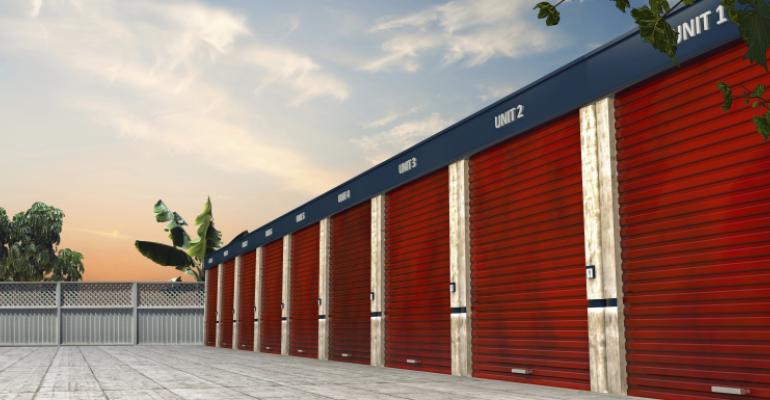In the first quarter of 2018, the manufactured housing, self-storage and industrial sectors were the stars of the REIT show, as real estate investment firm PGIM Real Estate noted in a market review.
And one of PGIM Real Estate’s REIT experts believes those stars will continue to shine for a while—and thinks manufactured housing is especially attractive for long-term investors.
In a Q&A with NREI, Marc Halle, head of global real estate securities at Madison, N.J.-based PGIM Real Estate, which has close to $70 billion in assets under management, offers his outlook on the manufactured housing, self-storage and industrial sectors. (PGIM announced last week that Halle will retire and pass his responsibilities over to portfolio manager Rick Romano).
This Q&A has been edited for length, style and clarity.
NREI: What’s behind the strong performance of the manufactured housing sector, and what do you think will happen with manufactured housing REITs going forward?
Marc Halle: It’s a really great sector and has been in the public markets for 20-plus years. Over the past few years, it’s really become more institutionally acceptable. These are just cash cows that tend to be recession-resilient; they’ve got bond-like income with good growth. It’s not been institutionally acceptable for many years because of the lack of a “sexy” factor. You didn’t want to put a manufactured home community on the cover of your investor report.
It’s difficult to build manufactured home communities, it’s difficult to create competition, it’s one of the biggest NIMBY sectors, and it’s an industry with very limited supply and good demand. These are no longer the mobile home parks of a TV sitcom. These are professionally run communities where the landlords develop the land, they put in the utilities, the tenants bring the homes in and they pay rent, and they pay rent on time with very low unpaid receivables.
Think of this like the self-storage sector 10 years ago. The self-storage sector was not an institutionally acceptable sector for many of the same reasons. Now, it is absolutely front and center in an institution’s portfolio. Manufactured home communities are moving in the same vein.
NREI: Like manufactured housing, self-storage is a NIMBY sector. What’s your assessment of the self-storage sector?
Marc Halle: Storage has evolved in terms of the type of product that’s out there. It’s become a much more retail product. It’s no longer the “German shepherd,” as we used to call it, where it’s in some industrial lot with a chain-link fence and two dogs running around. They’re now in more retail locations; the properties are much more consumer-friendly and access-friendly. And it’s easier to build a self-storage facility, in that it requires a lot less capital than a manufactured home community, so the barrier to entry in manufactured homes is much higher than self-storage.
But in the self-storage sector, you really have to be careful of the supply dynamic because some markets tend to get overbuilt quickly. Having said that, you’re looking at excellent same-store growth and at stocks that are very fairly valued in the market.
What’s been really amazing in the self-storage business has been the success of your units used to be based on the placement you had in the Yellow Pages. Now, the success of your unit is based on technology. When you look at a company like Extra Space, they spend $30 million a year on technology. When you Google “self-storage,” if you’re in their market, they want to be the first return on your Google search. What’s happened in the self-storage sector is the technology advantage of the large public operators has really distanced them from the private operators in terms of occupancy and net operating income growth. Technology has really made a huge impact on that business and made it much more of an institutional investment from a return-on-cost perspective.
NREI: How are you feeling about the industrial sector?
Marc Halle: The public markets are manic-depressive. We overdo it on the way up, and we overdo it on the way down. Industrial has a great runway for where we are today due to the insatiable demand for short-term delivery of goods. For every sq. ft. of retail that goes dark, you see 2 or 3 sq. ft. of industrial that goes light. So it’s a trade-off between the two.
We’re over-stored, generally, throughout the country. We’ve got too much square footage. We do like retail—we just have too much of it. Retail has got to rationalize itself. On the other hand, people are still shopping, but they’re buying through a different medium, so you want to have that omni-channel distribution. Every retailer has adopted the philosophy and the understanding that they can’t be one or the other.
On the industrial side, there’s some very good companies—they’ve got the logistics, they’ve got the placement, they’ve got the good assets. But their pricing is not cheap, and their pricing today is reflective of very strong future growth. At some point, that growth dissipates. Is it in two years, three years? I can’t tell you. Right now, they’re priced somewhat to perfection in terms of that increase in industrial demand for distribution. I do think that given the growth of rents and certainly demand for that market, the prices today are justified for those stocks. But be careful—at some point, this demand levels out.
NREI: Will that leveling out be a soft landing or a bust?
Marc Halle: With real estate, there’s always the threat of boom-and-bust. But the banks have been very stringent in lending capital for speculative development. You hate to say it’s different this time, but banks really have been the regulator of new development, and while development has gone on, it’s not gone on indiscriminately. Look for a soft landing on this.





